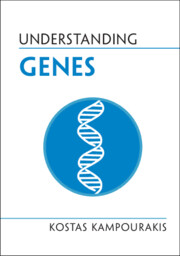Book contents
- Understanding Genes
- Series page
- Understanding Genes
- Copyright page
- Reviews
- Dedication
- Contents
- Foreword
- Preface: Genes, Science, and Science Fiction
- Acknowledgments
- 1 The Public Image of Genes
- 2 The Origin and Evolution of the Gene Concept
- 3 The Devolution of the Gene Concept
- 4 There Are No “Genes For” Characteristics or Disease
- 5 What Genes “Do”
- 6 The Dethronement of Genes
- Concluding Remarks: How to Think and Talk about Genes?
- Summary of Common Misunderstandings
- References
- Index
5 - What Genes “Do”
Published online by Cambridge University Press: 17 February 2022
- Understanding Genes
- Series page
- Understanding Genes
- Copyright page
- Reviews
- Dedication
- Contents
- Foreword
- Preface: Genes, Science, and Science Fiction
- Acknowledgments
- 1 The Public Image of Genes
- 2 The Origin and Evolution of the Gene Concept
- 3 The Devolution of the Gene Concept
- 4 There Are No “Genes For” Characteristics or Disease
- 5 What Genes “Do”
- 6 The Dethronement of Genes
- Concluding Remarks: How to Think and Talk about Genes?
- Summary of Common Misunderstandings
- References
- Index
Summary
To understand what genes “do,” we have to consider what happens during development. The first and most striking evidence that the local environment matters for the outcome of development was provided by the experiments of embryologists Wilhelm Roux and Hans Driesch in the late nineteenth and early twentieth centuries. Roux had hypothesized that during the cell divisions of the embryo, hereditary particles were unevenly distributed in its cells, thus driving their differentiation. This view entailed that even the first blastomeres (the cells emerging from the first few divisions of the zygote – that is, the fertilized ovum) would each have different hereditary material and that the embryo would thus become a kind of mosaic. Roux decided to test this hypothesis. He assumed that if it were true, destroying a blastomere in the two-cell or the four-cell stage would produce a partially deformed embryo. If it were not true, then the destruction of a blastomere would have no effect. With a hot sterilized needle, Roux punctured one of the blastomeres in a two-cell frog embryo that was thus killed. The other blastomere was left to develop. The outcome was a half-developed embryo; the part occupied by the punctured blastomere was highly disorganized and undifferentiated, whereas those cells resulting from the other blastomere were well-developed and partially differentiated. This result stood as confirmation for Roux’s hypothesis.
Keywords
- Type
- Chapter
- Information
- Understanding Genes , pp. 121 - 148Publisher: Cambridge University PressPrint publication year: 2021

